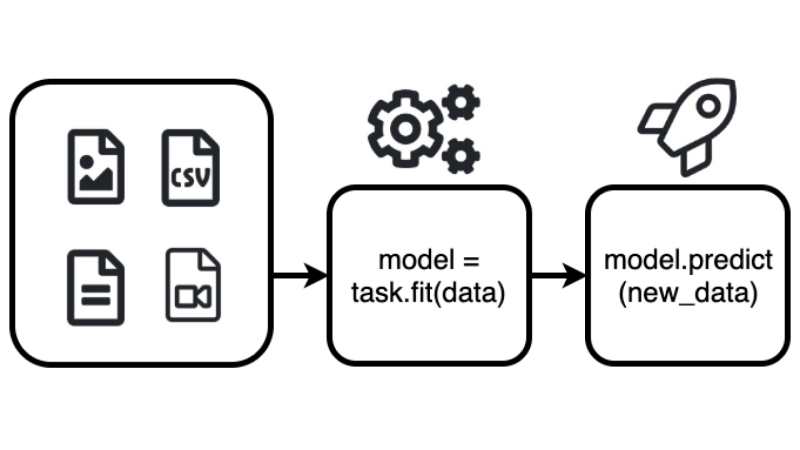Watch all the Transform 2020 sessions on-demand here.
Building machine learning applications involving images, text, and tabular data sets isn’t easy. It requires feature engineering, or the use of domain knowledge of data to create the features that make AI algorithms work, plus plenty in the way of data set preprocessing to ensure biases don’t emerged in trained models.
That’s presumably why Amazon developed AutoGluon, an open source library designed to enable developers to write AI-imbued apps with only a few lines of code. It publicly launched today roughly a month after quietly emerging on GitHub.
AutoGluon aims to automate many of the decisions developers have historically had to make themselves. Normally, tasks like hyperparameter tuning are performed manually, requiring scientists to anticipate how hyperparameters — which represent the choices made when constructing an AI model — will influence model training. Another commonly human-supervised task called neural architecture search entails sophisticated engineering, at least to the extent that developers must identify the optimal design for their respective models.
To this end, AutoGluon can produce a model with as few as three lines of code by automatically tuning choices within default ranges that are known to perform well for a given task. Developers simply specify when they’d like to have their trained model ready, and in response, AutoGluon leverages available compute resources to find the strongest model within the allotted runtime.
June 5th: The AI Audit in NYC
Join us next week in NYC to engage with top executive leaders, delving into strategies for auditing AI models to ensure fairness, optimal performance, and ethical compliance across diverse organizations. Secure your attendance for this exclusive invite-only event.
It builds on work undertaken by Amazon and Microsoft three years ago — Gluon — that was later published in Apache MXNet and Microsoft’s Cognitive Toolkit. Whereas Gluon is a machine learning interface that allows developers to build models with a collection of prebuilt and optimized components, AutoGluon handles the development process end-to-end.

Above: A schematic illustrating AutoGluon.
Out of the box, AutoGluon can identify models for tabular prediction, image and text classification, and object detection, and it offers an API that more experienced developers can tap to further improve a model’s predictive performance. It requires Python version 3.6 or 3.7 and it currently only supports Linux, but Amazon says that Mac OSX and Windows versions will be available soon.
“We developed AutoGluon to truly democratize machine learning, and make the power of deep learning available to all developers,” AWS applied scientist Jonas Mueller said in a statement. “AutoGluon solves this problem as all choices are automatically tuned within default ranges that are known to perform well for the particular task and model.”
AutoGluon’s debut follows on the heels of major upgrades to Amazon Web Services’ (AWS’) SageMaker, a toolkit for continuously training and deploying machine learning models to cloud and edge environments. AWS SageMaker Studio is a model training and workflow management tool that collects all the code, notebooks, and folders for machine learning into one place, while SageMaker Notebooks lets developers quickly spin up a Jupyter notebook for machine learning projects. There’s also SageMaker Autopilot, which automates the creation of models by automatically choosing algorithms and tuning those models; SageMaker Experiments, which tests and validates models; SageMaker Debugger, which improves the accuracy of models; and SageMaker Model Monitor, which detects concept drift.
Amazon previously launched AWS Deep Learning Containers, a library of Docker images preinstalled with popular deep learning frameworks, as well as a range of fully managed services including Personalize, Textract, Fraud Detector, and CodeGuru. With these and standalone tools like AutoGluon, the Seattle tech giant is chasing after a market that’s anticipated to be worth $118.6 billion by 2025, according to Statista.


